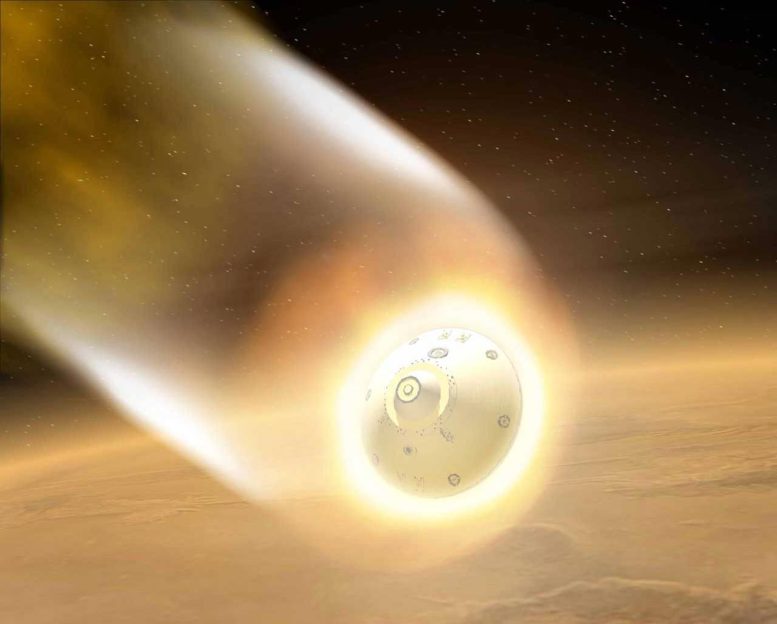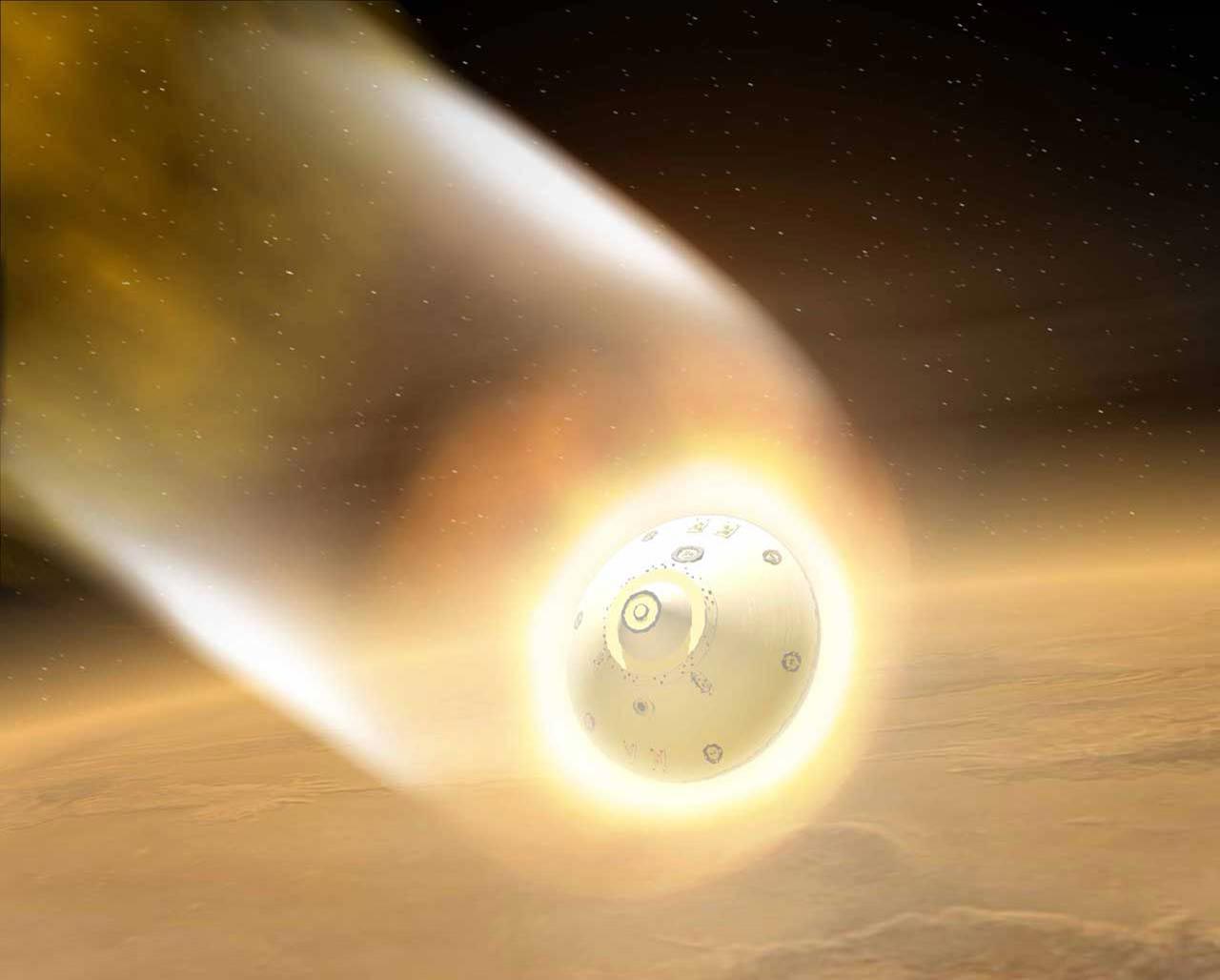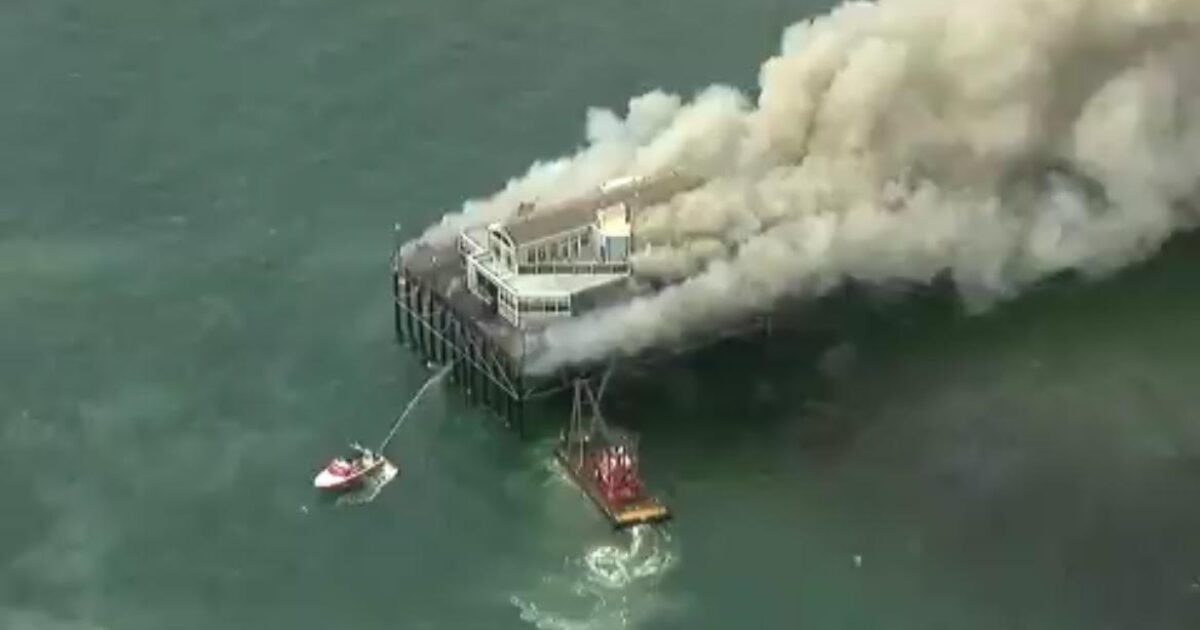
The aeroshell protects the rover from fiery temperatures as it enters the Martian atmosphere in January, 2004. Credit: NASA
In the summer of 2003 two rovers began their journeys to ” data-gt-translate-attributes=”[{[{“attribute”:”data-cmtooltip”, “format”:”html”}]”>Mars at a time when the Red Planet and Mars were the nearest they had been to each other in 60,000 years. The rovers had been built at breakneck speed by ” data-gt-translate-attributes=”[{[{“attribute”:”data-cmtooltip”, “format”:”html”}]”>NASA’s Jet Propulsion Laboratory. But now there were new pressures. There were other nations flying missions to Mars. What if they succeeded and JPL didn’t? And the greatest pressure was knowing of NASA’s recent loss of the space shuttle Columbia and its crew of seven. NASA was in great need of a success. After picture-perfect landings, the two intrepid rovers, Opportunity and Spirit, went on to rove Mars for years, becoming major icons in NASA lore.
Landing on Mars is the story of how two rovers survived a massive solar flare during cruise, the now well known “Six Minutes of Terror” (the six minutes from the time a spacecraft traveling at 12,000 mph hits the top of the Martian atmosphere until it reaches surface), and what came close to being a mission ending software error for the first rover once it was on the ground.
NASA’s Opportunity was one of two Mars Exploration Rovers, along with its twin, Spirit. It was launched in July 2003 and landed on Mars in January 2004 for what was expected to be a 90-day mission. But the robust rover far outlived its planned lifetime, exploring the Martian surface and sending back invaluable data for 14 years until contact was lost in 2018. Opportunity made several important scientific discoveries, including the first evidence of liquid water in Mars’s past, and traveled over 28 miles on the Martian surface, making it the longest distance covered by any vehicle on another planet.
NASA’s Spirit, the twin rover to Opportunity, was also launched in 2003 and landed on Mars three weeks prior to Opportunity. It was operational for six years, from 2004 until 2010, and made significant contributions to our understanding of the Red Planet. Spirit’s landing site was in Gusev Crater, believed to have once held a lake. Though its search for signs of past water here was initially inconclusive, Spirit eventually found evidence of ancient hydrothermal activity, suggesting Mars once had conditions that could have supported life. Its mission ended when it became stuck in a sand trap, but Spirit’s scientific legacy lives on through the wealth of data it provided.
JPL and the Space Age Video Series
- Episode 1: The American Rocketeer
- Episode 2: Explorer 1
- Episode 3: Destination Moon
- Episode 4: The Changing Face of Mars
- Episode 5: The Stuff of Dreams
- Episode 6: The Footsteps of Voyager
- Episode 7: To the Rescue
- Episode 8: The Pathfinders
- Episode 9: The Breaking Point
- Episode 10: Saving Galileo
- Episode 11: Mission to Mars
- Episode 12: Landing on Mars










